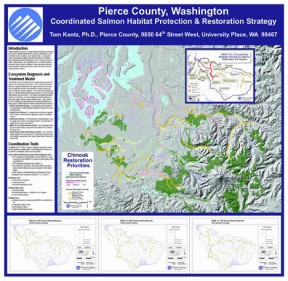1. District Court offers amnesty for delinquent accounts
Pierce County District Court today announced an amnesty program aimed at clearing delinquent accounts. More than 70,000 cases are delinquent for non payment of traffic infractions and criminal violations. The unpaid accounts go back as far as 10 years.
“This is a rare opportunity for defendants to clear up their delinquent accounts,” said District Court Administrator Mike Kilborn. “By doing so they can avoid future mounting collection fees and civil actions such as garnishment or property liens.”
During the amnesty period, June 1 through July 31, defendants will be allowed to pay the past due amount without interest. In some cases this represents a substantial savings to the defendant. This program represents an opportunity to resolve the delinquent accounts on a voluntary basis, according to Kilborn.
Failure to either pay the amnesty amount in full or set up a payment schedule may result in a civil judgment being filed to collect the outstanding amount.
Tacoma Municipal Court and district and municipal courts in Kitsap and Mason counties also are participating in the amnesty program. Other courts across the state have indicated to Kilborn and his staff that they also may take part.
The amnesty program is being administered by OSI Collection Services (888) 350-2247.
2. Salmon habitat map/poster wins award
A map used to educate citizens about Pierce County’s salmon recovery efforts has received national recognition. Entitled “The Pierce County, Washington, Coordinated Salmon Habitat Protection and Restoration Strategy,” the map received the first place award in the Specific Field category at the 2005 Washington URISA (Urban and Regional Information Systems Association) conference.
The map, created as a public education poster, is the work of Tom Kantz, environmental biologist with Pierce County Special Projects. “The map does an excellent job of clearly displaying important salmon data, and the cartography is well designed and beautiful,” said Linda Gerull, the county’s GIS Manager, who attended the conference.
Kantz uses the map/poster at public education and outreach events to show how Pierce County is relying on a combination of science-based, regulatory, administrative, and funding tools in its efforts to coordinate salmon recovery efforts.
“The primary science-based tool used we use is the Ecosystem Diagnosis and Treatment model, which helps us understand the habitat requirements for various salmon life stages in different stream segments,” said Kantz, who earned a doctorate in botany at Louisiana State University, Baton Rouge. “The results of the EDT modeling exercise are used to identify priority stream reaches and limiting habitat characteristics for each life stage within each stream reach.”
The poster was most recently used April 30 at a marine shoreline landowner workshop at Camp Seymour, near Key Center. The topic was “Marine Shoreline Habitat and Community-Led Salmon Restoration.”
The workshop was part of a series on topics such as native landscaping, septic system maintenance, and conservation tax incentives. The series is sponsored by Pierce County Special Projects, Puget Sound Action Team, Washington Sea Grant, Peninsula Light Co., Pierce County Water Programs, and the KGI Watershed Council.






